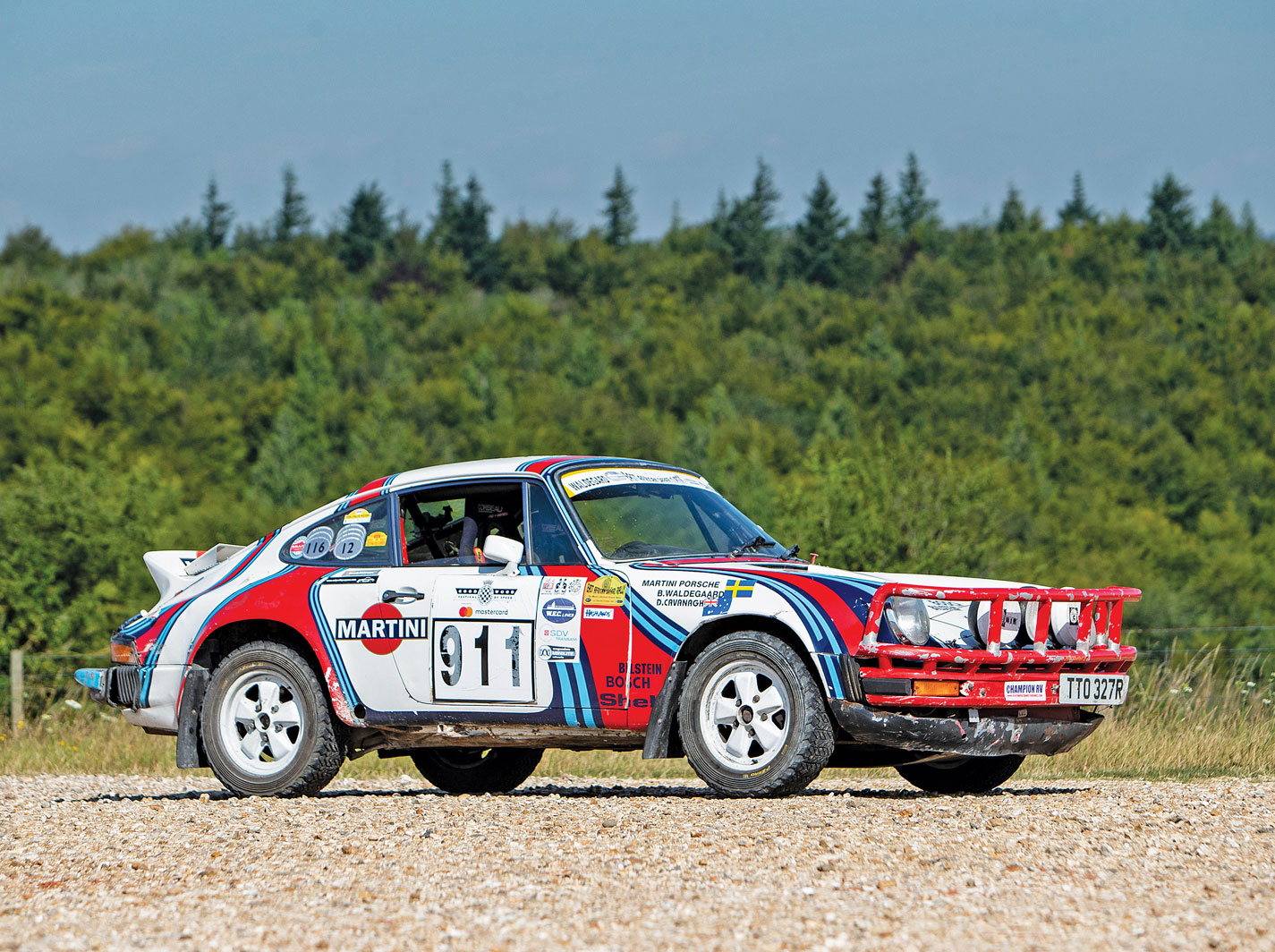SCM Analysis
Detailing
| Vehicle: | 1976 Porsche 911 Carrera 3.0 Rally Racer |
| Years Produced: | 1976–77 |
| Number Produced: | 3,691 |
| SCM Valuation: | $70,000 |
| Chassis Number Location: | Bulkhead just aft of gas tank |
| Engine Number Location: | Fan-housing support, right side |
| Club Info: | Porsche Club of America |
| Website: | http://www.pca.org |
| Alternatives: | 1977 Mercedes 280E, 1977 Citroën CX2400, 1977 Peugeot 504TI |
| Investment Grade: | C |
This car, Lot 43, sold for $296,717 (£207,000), including buyer’s premium, at Bonhams’ Chichester, U.K., sale on April 10, 2022.
Let’s start today’s discussion by considering three more-or-less recent sales of rally-specialized Porsche 911s:
- At Bonhams’ Monaco auction this year, a 1982 911SC, run in multiple classic Dakar rallies and painted in classic Rothmans livery, sold for $131,370 (Lot 130).
- Our subject 1976 911 Carrera sold at Goodwood for $296,717.
- In October 2019, a 1985 factory team 959 Paris–Dakar entrant sold for just shy of $6m (Race Profile, February 2019, p. 98).
Given that they all look pretty much the same and provide a similar driver’s experience, this is an incredible range of values.
I will argue that reconciling this range of pricing (and presumably value) makes the most sense if approached through my oft-repeated concept of adding collector values to a base of useability (“weapons grade”) values, but in this circumstance, it gets more complicated: Too much history might end up hurting the value.
Battle-worthy vs. collector-worthy
The underlying weapons-grade value is probably established by the Monaco sale. It was a street 911SC that had been turned into a vintage rally car in later years. Apparently well built for its purpose and mechanically excellent, it had been run in multiple Dakar Classics and other rallies between 2013 and 2021 — no small feat — but also had no period history. The Rothmans livery was beautiful, but faux; it was just painted that way. As such, it was an excellent weapon for someone who wanted to go and play in the vintage-rally scene, but not appealing to collectors.
The Paris–Dakar 959 was the opposite extreme: a crown jewel for a deep-pocketed collector. It was a one-of-three factory-built and factory-sponsored rally racers that combined the 959 mechanical package in an (ostensibly production for FIA homologation needs) 911SC body. It and its sisters dominated the 1985 Paris–Dakar event and are a huge part of Porsche’s developmental history. The iconic Rothmans livery is honestly worn and testifies to the significance of the car. Unique, rare, and important, this sale represented almost pure collector value. Nobody in their right mind would use it for much more than a drive up the Goodwood Festival of Speed hillclimb, but the cognoscenti genuflect before it.
The space between
Our subject car sits somewhere in between these bookends — the difficulty lies in establishing where. On the positive side, it has been a rally car from the beginning, running a series of high-profile international events starting with London–Sydney in 1977. It reputedly has more competition miles on it than any Porsche ever built, and as such occupies a unique niche. I’m told that it has (or had) some special bits, like a pressurized clutch housing to keep dust and dirt out.
On the not-so-positive side (from a collector’s standpoint), though it was prepared for distance rallying by the factory, it is not a “team car.” This was a garden-variety 911 Carrera taken from stock and prepared for private entrants to run in London–Sydney, after which much of its history was with Australian Porsche dealers. The Martini livery is impressive, but not correct or important. Originally, it was a privateer car that ran in stock red paint.
The huge history presents a further problem. Roughly three times around the world flat-out on purposely rough roads will beat the bejeebies out of any car, so how much of the original 911 is really in there? It may not matter, but we know the engine and transaxle have been replaced at least once, and I can’t imagine that any of the original suspension, brakes, shocks, etc., have survived. Even the unibody chassis has to be suspect structurally after that much abuse. It is either a tired old warhorse or a restorative surgeon’s masterpiece; either scenario has its issues.
Wishing for a do-over
So who is going to buy a car like this and for how much? A strong argument could be made that the history alone makes it a prized and valuable anchor to a serious Porsche collection. This is evidenced by our subject car’s offering at Bonhams’ Goodwood sale in September 2019, when it bid to £300,000 ($373,632, SCM# 6914291) without selling. The counter-argument, that one should accept what the market offers, is made by this car’s sale by Bonhams not quite three years later for a third less than the earlier high bid. Someone was not well served by insisting on a high collector value.
My English sources tell me that this is an excellent car and, at the price, a worthy addition to somebody’s Porsche collection. I suggest it is also a cautionary tale. Collector value in racing cars is highly dependent on a few specific characteristics: winning major international events, uniqueness and mechanical innovation, direct involvement and support by an important manufacturer, having been driven by famous and successful drivers, and sometimes just being an example of a desirable marque.
If you don’t have those, you are often selling smoke for collector value. Sometimes that works, sometimes not, but don’t be too proud if the market doesn’t agree with what you think the actual value should be. Today’s subject had an amazingly long competition résumé that makes it interesting and arguably important, but the car itself isn’t so special, and it never actually won anything, so its value is subjective and dependent on the buyer. It was fairly bought. ♦
(Introductory description courtesy of Bonhams.)




